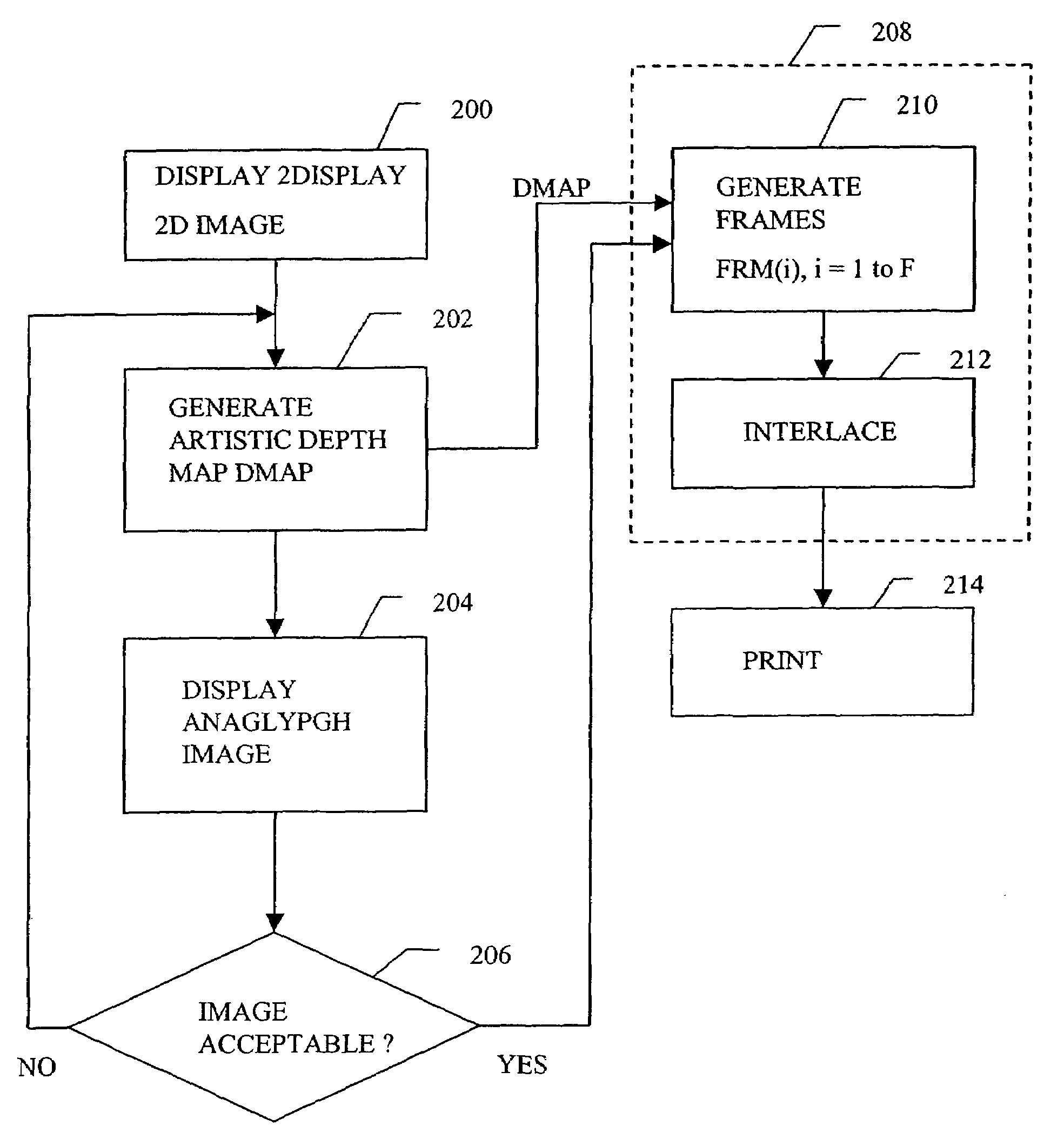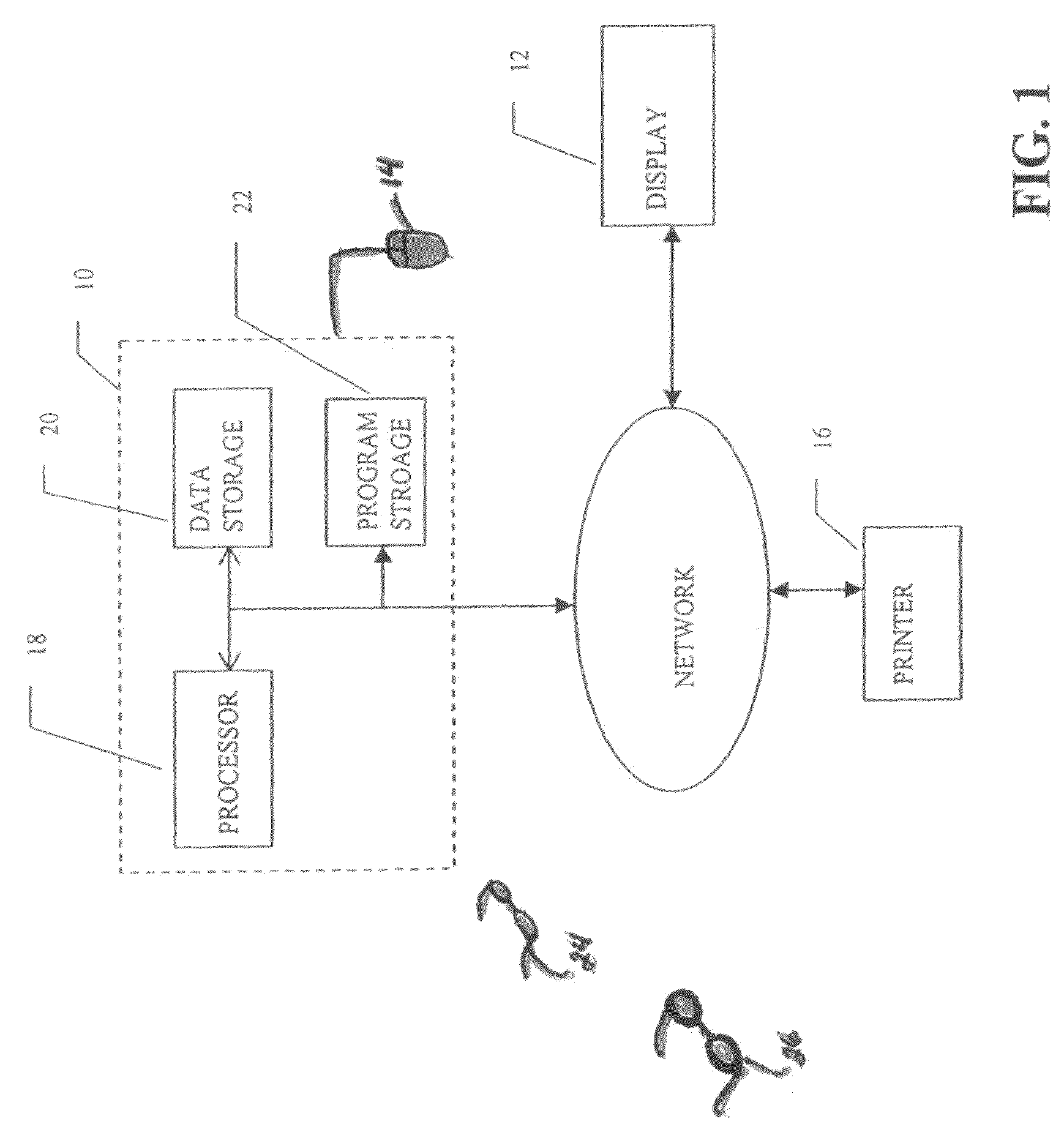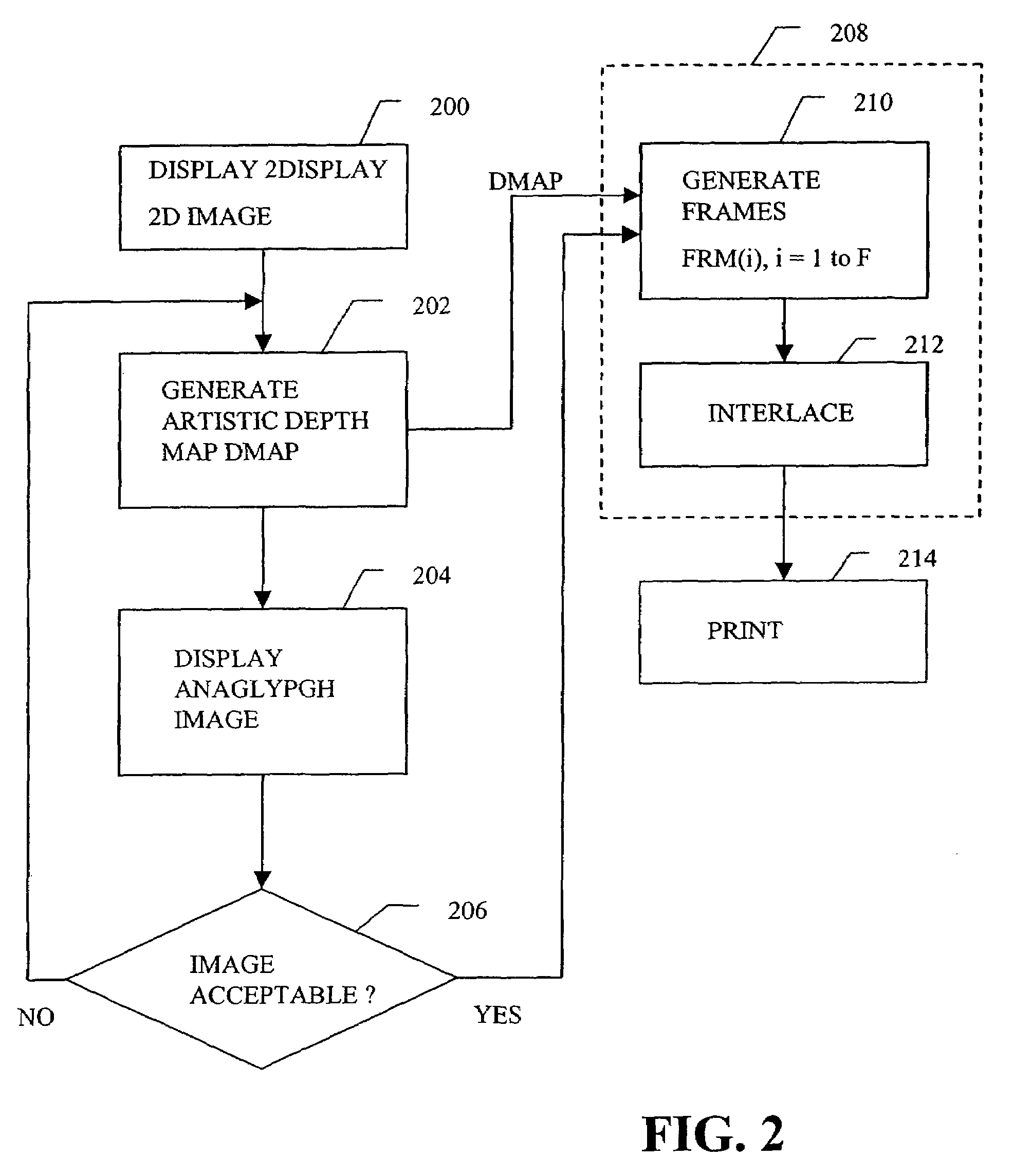Multi-dimensional images system for digital image input and output
a digital image and multi-dimensional image technology, applied in the field of three-dimensional viewing, can solve the problems of significant changes, uncomfortable wearing, and no parallax information availabl
- Summary
- Abstract
- Description
- Claims
- Application Information
AI Technical Summary
Problems solved by technology
Method used
Image
Examples
Embodiment Construction
[0057]Referring to FIG. 1 a first example system will be described. The FIG. 1 example includes a processing resource 10 connected to a display 12, a user command input interface 14, and a printer 16. The processing resource 10 includes a data processor 18, a program storage resource 20 and a data storage resource 22. The processing resource 10 may be an off-the-shelf general-purpose programmable computer, such as is available from numerous vendors. An example is a Dell Optiplex™ personal computer (PC), having an Intel Pentium IV or equivalent processor, 256 Mbytes of random access memory (RAM), a DVD-CD disc drive, and a 60 GByte internal magnetic disc drive, running under, for example, the Microsoft Windows XP™ operating system. The Dell Optiplex™ is merely an example implementation of the processing resource 10. Other implementations include, for example, an Apple G4 iBook™ or Powerbook™ computer, running under Apple's OS9 “Classic” or OSX™ Unix-type operating system. Still anoth...
PUM
 Login to View More
Login to View More Abstract
Description
Claims
Application Information
 Login to View More
Login to View More - R&D
- Intellectual Property
- Life Sciences
- Materials
- Tech Scout
- Unparalleled Data Quality
- Higher Quality Content
- 60% Fewer Hallucinations
Browse by: Latest US Patents, China's latest patents, Technical Efficacy Thesaurus, Application Domain, Technology Topic, Popular Technical Reports.
© 2025 PatSnap. All rights reserved.Legal|Privacy policy|Modern Slavery Act Transparency Statement|Sitemap|About US| Contact US: help@patsnap.com



